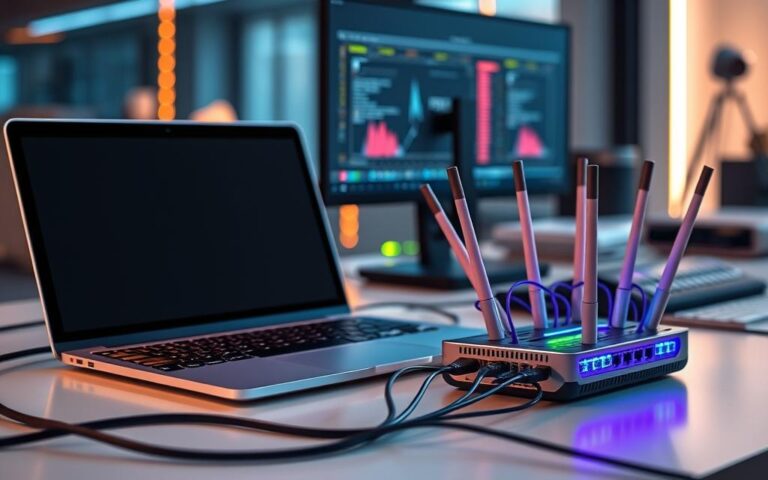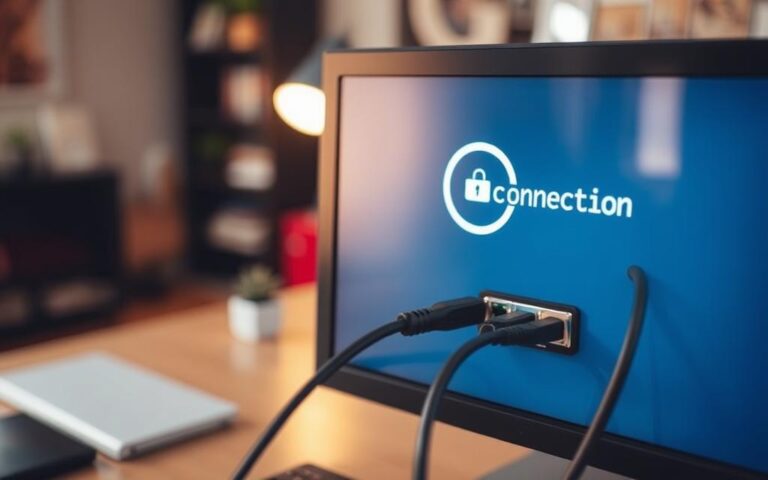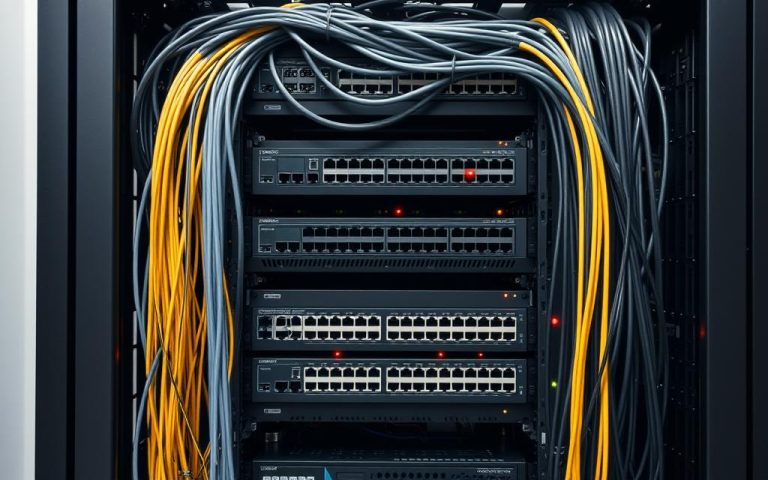Troubleshooting: Why Can’t I Find Other Computers on the Network?
Have you ever been stuck, unable to see other computers on your network? This issue can really slow you down, especially if you need Windows network visibility for working together or sharing files. It’s a common problem for many Windows users. Sometimes, your PC might be hidden because network discovery is off. This makes it tough to see other devices that are connected.
To fix these network issues, you need to understand a few key points. First, turning on network discovery is easy. Just go to Settings > Network & Internet > Sharing Options. But sometimes, even if you do this, Windows Firewall might stop you from sharing files. Or, services that help find other computers might not be working right. This guide aims to help you sort out these problems so you can connect with the rest of your network.
Understanding Network Discovery Issues
Network discovery lets devices on a local area network (LAN) connect and talk to each other. It makes sharing files and accessing resources easy. Yet, sometimes devices can’t see each other because of network discovery settings.
The setup of Windows network plays a big part in device visibility. A key element is the SMBv1 protocol’s presence. This protocol isn’t installed by default in recent Windows updates. The removal of the Computer Browser service, which depends on SMBv1, affects device discovery.
Turning on SMB 1.0/CIFS File Sharing might expose users to malware threats like WannaCry. It’s crucial to be careful when activating it.
For network discovery to work, certain Windows services need to run properly. This includes the Function Discovery Provider Host and Resource Publication services. They should be set to “Automatic.” If you can’t see other computers, adding mutual credentials might help.
Choosing the right sharing settings is also key for visibility. You should go to the Control Panel and make sure the correct options are on. Complex issues might need you to remove network adapters and restart your device. This makes Windows reinstall essential components.
Even with the right settings, network discovery might still have issues. Problems got worse after the Spring Creators Update, especially for domain computers. The removal of the Homegroup feature has made device interaction tougher.
To fix visibility issues, check the status of important services and manage SMBv1 use carefully. Microsoft recommends turning on the Function Discovery Resource Publication service for help.
Common Causes for Network Visibility Problems
There are several reasons why network problems happen. Errors in network settings and disabled services are common issues. The right Windows settings are essential for spotting connected devices.
If services like Function Discovery Provider Host and Function Discovery Resource Publication are off, it’s hard to browse on Windows. Turning these services on has helped many people. Additionally, firewall settings can stop devices from talking to each other.
It’s vital that all devices use similar account types. Differences in permissions can make it hard to access shared stuff. Switching from older Windows versions to Windows 10 can bring up these issues. Proper network settings ensure devices work well together.

Different Windows versions can greatly affect how devices find each other. Windows 10 tends to have more problems compared to older systems. By fixing these issues, connectivity and network performance can improve a lot.
| Issue | Impact | Resolution |
|---|---|---|
| Disabled services | Prevents device detection | Enable Function Discovery services |
| Firewall settings | Blocks communication | Adjust firewall to allow network traffic |
| Account type discrepancies | Limits access to shared resources | Ensure uniform account types across devices |
| Incorrect network settings | Affects network visibility | Review and adjust Windows network settings |
How to Enable Network Discovery in Windows 10 and 11
To see other devices on your local network, enabling network discovery in Windows 10 and 11 is key. It helps with sharing files and accessing resources easily. Here’s how to activate it by adjusting Windows settings and firewall settings.
Checking Network and Sharing Settings
To turn on network discovery, start by going to the Control Panel. Follow these steps carefully:
- Open Control Panel from the Start menu.
- Select Network and Sharing Center.
- Click on Change advanced sharing settings.
- In the Private network section, make sure Turn on network discovery is checked.
- Apply the changes to find other computers on your network.
Sometimes, even if these settings are correct, you might run into issues. This can mean you need to check other services that help with network visibility.
Adjusting Firewall Settings for Network Discovery
Adjusting your firewall settings is also crucial for network discovery. Here are the steps to allow it through Windows Defender Firewall:
- Open Command Prompt as an administrator.
- Run this command to enable network discovery:
netsh advfirewall firewall set rule group=”Network Discovery” new enable=yes
Next, look at the Function Discovery services:
- Find Function Discovery Provider Host and Function Discovery Resource Publication in the services list.
- Set them both to Automatic and make sure they’re running.
After doing these steps, you should be able to see devices on your network. If you’re still having trouble, you might need to troubleshoot further.
https://www.youtube.com/watch?v=hub-HPklelc&pp=ygUSI3RoZWV4cGxvcmVuZXJ3b3Jr
Steps to Troubleshoot Network Connection Problems
Fixing network issues might seem tough, but knowing the right steps can make it simpler. A top solution is resetting network settings. This solves problems caused by wrong settings or software issues, making the connection more reliable.
Resetting Network Settings
First, go to your device’s advanced network settings. Doing a network reset removes bad settings that interfere with your connection. Most network issues, about 9 out of 10, can be sorted with basic troubleshooting.
You should also use Command Prompt commands like flushing DNS and renewing IP addresses. These steps can really help fix network issues.
Tools like ping and ipconfig are essential for checking your network. After restarting your modem and router, 80% of users quickly reconnect to their internet provider. If simple fixes don’t work, resetting the network settings is your best bet for getting back online.
FAQ
What is network discovery?
Network discovery lets computers and other devices find and talk to each other on a network. It makes sharing files and printers easy. This is key for both home and work networks.
Why can’t I find other computers on my network in Windows 10 and 11?
Not seeing other computers can be because of network discovery or firewall settings. Making sure all devices are on the same network type helps too.
What are common causes of network visibility issues?
Problems often come from wrong network settings or firewalls stopping devices from talking. Make sure all gadgets use the same account type to fix this.
How do I enable network discovery on my Windows computer?
In Windows 10 and 11, go to Network and Sharing Centre. Choose the right network discovery options. You might also need to change firewall settings. Sometimes, you have to use Command Prompt commands.
What steps should I take to troubleshoot network connection problems?
Begin by resetting your network settings to fix errors. Use Command Prompt as needed to clear DNS or change IP addresses.














